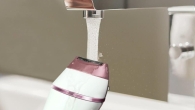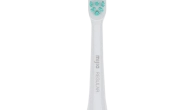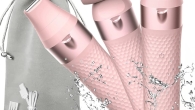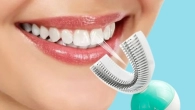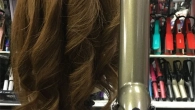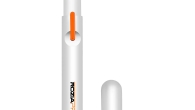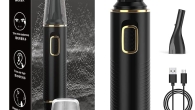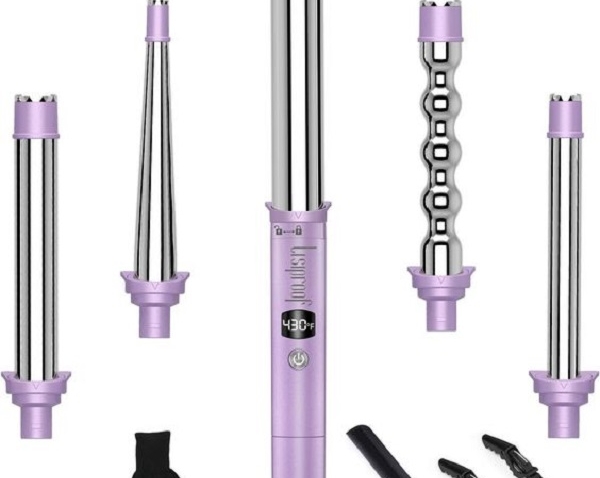
Curling Iron vs. Flat Iron: the Right Tool for Your Hair Styling Needs
The Ultimate Guide to Choosing the Right Hair Tool in 2024
Ever scrolled through endless hair tutorials and coveted those enviable waves and sleek styles? You’re not alone. Achieving salon-worthy looks at home can be daunting, especially when it comes to choosing the right hot tools. Two versatile styling staples, curling irons and flat irons, can create a variety of effects, but understanding their strengths and weaknesses is key to unlocking your hair’s full potential.
This comprehensive guide dives deep into the world of curling irons and flat irons, helping you navigate their functionalities and identify the perfect fit for your desired look and hair type. Whether you crave bouncy curls, effortless waves, or pin-straight strands, we’ve got you covered.
Unveiling the Curling Iron: Your Gateway to Curls and Waves
A curling iron is a cylindrical heat styling tool with a barrel that heats up to create defined curls or looser waves. The barrel size significantly impacts the curl pattern. Wider barrels produce looser, beachy waves, while narrower barrels create tighter, ringlet curls.
Here’s a breakdown of the key features of curling irons:

- Barrel Size: This is the most crucial factor to consider. Ranging from narrow (⅜ inch) to wide (1.5 inches), the barrel size determines the curl’s tightness.
- Barrel Material: Ceramic, tourmaline, and titanium are popular choices. Ceramic barrels distribute heat evenly, tourmaline emits negative ions to reduce frizz, and titanium heats up quickly and maintains consistent heat.
- Heat Settings: Adjusting the heat based on your hair type is essential. Fine hair requires lower temperatures (around 250°F to 300°F), while coarse hair can handle higher heat (up to 400°F).
- Clamp or Wand: Curling irons come in two main styles: clamp and wand. Clamp irons have a lever that secures hair around the barrel for uniform curls. Wands require manual wrapping of hair around the barrel, offering more styling freedom.
Mastering the Art of Flat Irons: Achieving Straight, Sleek Hair
A flat iron, also known as a straightener, utilizes two heated plates to straighten, smooth, and tame frizzy hair. It can also be used to create waves and add volume. Let’s explore the key characteristics of flat irons:
- Plate Size: Similar to curling irons, the plate size influences styling versatility. Wider plates (up to 2 inches) are ideal for straightening long, thick hair, while narrower plates (less than 1 inch) work well for fringes, short hair, and creating sharp styles.
- Plate Material: Similar to curling irons, ceramic, tourmaline, and titanium are common choices. Each material offers unique benefits, so consider your hair type and desired outcome.
- Heat Settings: Just like curling irons, adjust the heat based on your hair’s needs. Fine hair should be styled at lower temperatures (around 250°F to 300°F), while coarse hair can withstand higher heat (up to 400°F).
- Floating Plates: This feature allows the plates to move slightly, ensuring even pressure on hair strands and minimizing damage.
Curling Iron vs. Flat Iron: A Side-by-Side Comparison
Now that we’ve explored the individual functionalities of curling irons and flat irons, let’s compare them head-to-head across various aspects:

- Desired Style: This is the most significant differentiating factor. Curling hair with flat iron vs curling iron are designed for curls and waves, while flat irons excel at straightening and smoothing hair. Flat irons can also be used to create loose waves and add volume, but achieving tight curls is not their forte.
- Hair Type: Both tools can work on various hair types, but with adjustments. Curling irons are generally ideal for those who want to enhance or define their natural waves or create curls. Flat irons are excellent for taming frizz, straightening coarse or thick hair, and achieving a sleek, polished look. Fine hair might require a lower heat setting with both tools to minimize damage.
- Learning Curve: Curling irons can have a steeper learning curve, especially for beginners, as mastering the wrapping technique takes practice. Flat irons are generally easier to use, requiring you to simply clamp and glide down the hair shaft.
- Versatility: Flat irons offer more versatility in terms of styling options. While they primarily straighten hair, they can also create waves, flips, and add volume. Curling irons are more specialized for creating curls and waves, but the type of curl (tight or loose) depends on the barrel size.
Unveiling the Perfect Match: Choosing Between a Curling Iron and Flat Iron
Here are some key considerations to help you pick the winning tool for your hair goals:

- Desired Style: If you crave luscious curls or beachy waves, a curling iron is your best bet. Consider the barrel size to achieve your preferred curl pattern. Tight ringlets require a narrower barrel (⅜ inch to ½ inch), while loose, beachy waves benefit from a wider barrel (1 inch to 1.5 inches).
-
Hair Type: For those with naturally wavy or curly hair, a curling iron can enhance your natural texture and create more defined curls. If you have straight hair that tends to fall flat, a curling iron can add volume and body. Flat irons are ideal for straightening frizzy hair, taming coarse or thick hair, and achieving a sleek, polished look. Fine hair might do well with a curling iron for looser waves but should opt for a flat iron with lower heat settings to avoid heat damage.
-
Styling Expertise: If you’re a hairstyling novice, a flat iron might be easier to use. Clamping and gliding the iron down your hair shafts is a more straightforward technique compared to mastering the hair wrapping technique required with a curling iron. However, with some practice, a curling iron can become second nature.
-
Versatility: A flat iron offers more flexibility in terms of styling options. While curling irons specialize in curls and waves, flat irons can straighten, create loose waves and flips, and even add volume at the roots. If you desire a variety of styling options, a flat iron might be more suitable.
Embracing Your Hair’s Potential: Tips and Tricks for Using Curling Irons and Flat Irons
Here are some valuable tips to ensure a positive experience while using your curling iron or flat iron:
- Heat Protection is Key: Always apply a heat protectant spray to your hair before using any hot tool. This helps shield your hair from heat damage, preventing dryness, split ends, and breakage.
- Work with Dry Hair: Never use a curling iron or flat iron on wet hair. The extreme heat can cause severe damage and breakage. Ensure your hair is completely dry before styling.
- Sectioning is Essential: For both curling irons and flat irons, sectioning your hair into manageable portions makes the styling process smoother and more efficient.
- Don’t Overdo It: Avoid holding the curling iron or flat iron on one hair section for too long. This can lead to heat damage and cause the hair to become frizzy or break.
- Embrace the Cool Down: Allow your hair to cool down completely before brushing or styling it further. This helps the style set and prevents the hair from reverting to its natural state.
Beyond the Basics: Advanced Techniques for Curling Irons and Flat Irons
Once you’ve mastered the fundamentals, you can explore advanced techniques to unlock even more styling possibilities:

- Curling Iron Techniques: Experiment with different wrapping methods to achieve various curl patterns. Try the classic wrap for uniform curls, the underhand wrap for looser waves, or the outside-in wrap for beachy texture.
- Flat Iron Techniques: For effortless waves, clamp the flat iron near the root and twist your wrist slightly as you glide down the hair shaft. You can create volume by flipping the ends outward or inward as you straighten.
With practice and a little creativity, you can become a hairstyling pro, using your curling iron or flat iron to achieve a variety of stunning looks.
Maintaining Your Hot Tools for Long-Lasting Performance
Taking proper care of your curling iron or flat iron extends its lifespan and ensures optimal performance. Here are some key maintenance tips:

- Clean the Barrel or Plates Regularly: Use a damp cloth to wipe away any product buildup or hair residue after each use. This prevents scorching and uneven heat distribution.
- Store Properly: Always allow your tool to cool down completely before storing it. Wrap the cord loosely and avoid coiling it tightly to prevent damage. Store your curling iron or flat iron in a heat-resistant pouch or cool, dry place.
By following these simple maintenance tips, you can keep your hot tools in top condition for years to come.
Embrace Your Hair’s Beauty: Invest in the Perfect Styling Tool
Choosing the right curling iron or flat iron empowers you to unlock your hair’s full potential and create a variety of stunning looks at home. Whether you crave luscious curls, effortless waves, or pin-straight strands, there’s a perfect hot tool waiting to be discovered. Consider your hair type, desired styles, and styling expertise to make an informed decision. With the knowledge and tips provided in this comprehensive guide, you’re well on your way to achieving salon-worthy results and embracing your hair’s unique beauty.




